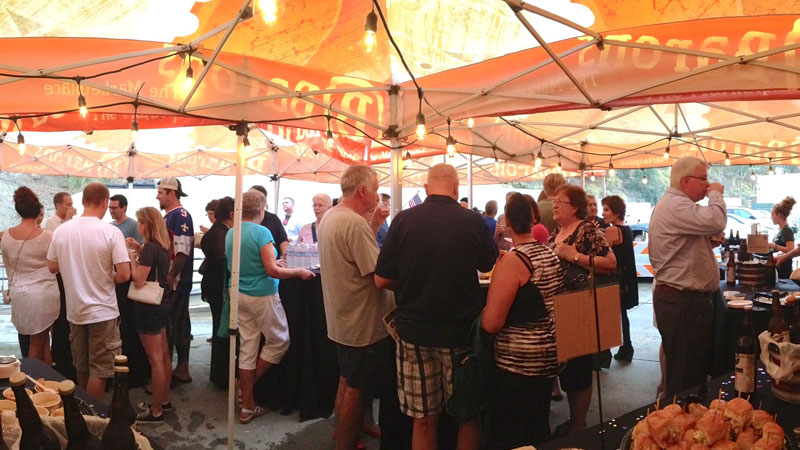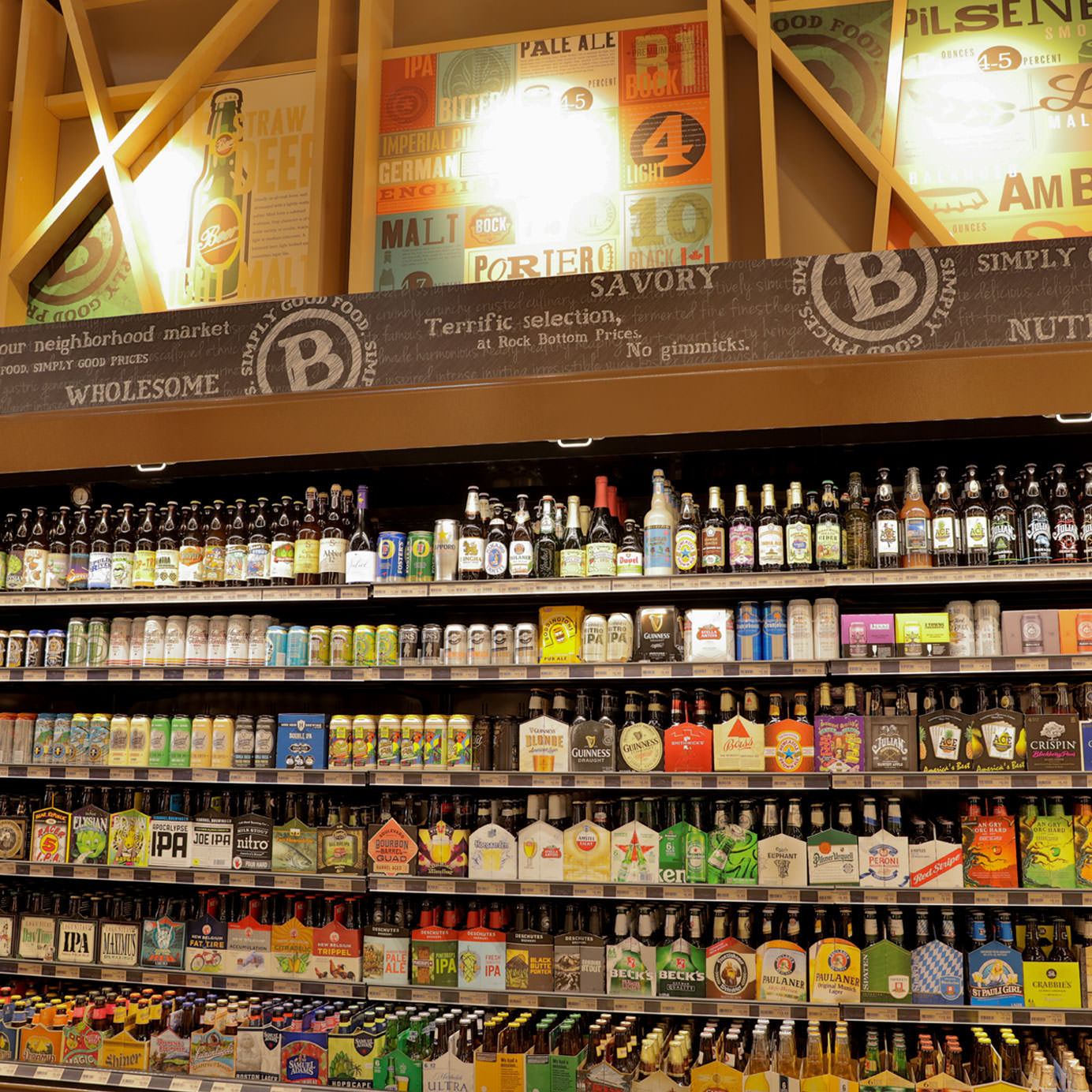Spend 10 minutes in a supermarket the week of any major holiday, and you quickly understand why 52 million Americans embrace food shopping apps. We might hire a TaskRabbit for a one-off pick-up, or enroll in a subscription-based service like Blue Apron. Either way, outsourcing our grocery shopping is a win for consumers and tech VCs.
It’s an enormous loss for retail stores, however, which continue to struggle with digital competition. “The longer you keep someone in your store, the higher chance you have of them spending more money,” Steve Thomas, chief marketing officer for consultant Windsor Marketing Group, explains to Food Dive.
Virtual shoppers are programmed to purchase a pre-set list of items, and gig economists are unlikely to linger. That’s why chains like Wegmans, Whole Foods, Kroger, and California-based Baron’s have rolled out a slew of amenities to get “real” shoppers in the door.
Chief among them is the in-store bar. Shopping drives most of us to drink, it seems; and savvy grocery chains figure they might as well capture those dollars by turning supermarkets into destinations for excellent craft beer and wine.
The “grocery-restaurant” hybrid isn’t new; there have been dining areas, coffee counters, and hot food bars in grocery stores for years. But these offerings provide a convenience to people already shopping; they rarely entice new customers to come inside. In-store bars, however, aim to do just that.
Wegmans is an East Coast-based supermarket chain with nearly 100 stores, approximately 10 percent of which contain “The Pub by Wegmans” concept. Menus offer seasonal comfort food ranging from crab cakes to buffalo wings and, of course the classic comfort dish: mac & cheese.
They also have plenty of craft beers on hand, some of which are pub exclusives like Wegmans 1916 lager (made by New York-based Three Heads Brewing) as well as Tale Chaser IPA by Sly Fox Brewing Company from Pennsylvania. “Food-friendly wines and signature cocktails” make it easy for multitaskers of all drinking persuasions to check off their to-do lists with a tipple.
America’s largest supermarket chain, Kroger, has over 2,000 stores nationwide and has offered growler fills in multiple states for over a decade. Kroger’s “Marketplace” concept is in only a fraction of its stores (a little over 100 locations), but they focus on prepared foods like gourmet sushi and made-to-order sandwiches. In states where on-site alcohol consumption is allowed, bars serving local beers and wine are also open for business.
Since launching the concept in Arizona in 2003, Marketplaces are now found in Ohio, Georgia, Virginia, New Mexico, and likely many more in the coming years.
National chain Whole Foods debuted its pub concept in 2009. Now, hundreds of stores offer beer and wine flights in comfortable, tavern-style interiors nestled among dairy aisles and bread. Rotating menus include a range of nationally available and local beers as well as “signature cocktails” and wines from around the world.
Devon Broglie, Whole Foods’ global beverage buyer, tells DRAFT Magazine that offering draft beer “became the perfect symbiosis” to keep consumers coming to purchase a 6-pack to take home on-site. “We want to be the sort of community watering spot.”

Many of these stores focus on providing hard-to-find or exclusive beers, a move that can speak to or create a craft beer market in destinations where that growth lags behind wine and spirits. The proof is in the profit margins; according to USA Today, by offering onsite craft beer pubs, Kroger has grown its craft beer market share for more than 11 years straight.
This type of multifaceted experience entices a core demographic to linger, and it appeals to outliers who might not have stepped in the door otherwise.
“When we first started, we expected to see mostly craft beer enthusiasts and millennials,” Rachel Shemirani, vice president of marketing for Barons Market, a California-based grocery chain, says. “Much to our surprise, we see all kinds of people spanning all age groups with a variety of interests.”
Rather than dedicating permanent floor space to bars, Barons hosts monthly pop-up pubs in its stockrooms. Called Backroom Beer Pairings, these events work with a rotating cast of local breweries and chefs to create one-off menus tasted in the store. One hundred percent of each event’s proceeds goes to a different charity, providing another incentive for people to attend. “It’s really become a neighborhood event,” Shemirani says.
Shemirani confirms Barons does see “a bump in beer sales overall, the month after the beer pairing.” She is reluctant to share specific percentages, but she’s firm about the value Barons sees in the events.
“In an increasingly competitive industry, grocery stores must create interesting, exciting, and unique in-store experiences for their customers so that they stand out in the crowd,” she says. “While brick-and- mortar grocery stores aren’t going anywhere, they do need to challenge themselves to constantly come up with new ideas to engage their customers.”
Different states’ laws dictate how these in-store pubs can work. Depending on the state’s open-carry laws, some allow patrons to sip and shop, while others are partitioned off in specific areas for over-21 shoppers only.
“We have a specific tasting license in five out of seven stores,” Shemirani says. “In our sixth store we pull a one-day event permit, and in our seventh store we have a conditional-use permit. These are all different based on store configurations and the local rules and regulations. The tasting areas must be separated and secured from the rest of the store. Of course, we check all IDs and anyone under 21 is never allowed, including infants.” (Good news for the anti-kids-in-breweries crowd.)
Technological advancements provide convenience but not community. By giving shoppers a reason to look forward to a trip to the supermarket, grocery chains improve their bottom lines by circumventing our most anti-social, overworked, and screen-addicted tendencies. If this is the future of shopping, we’ll drink to that.
